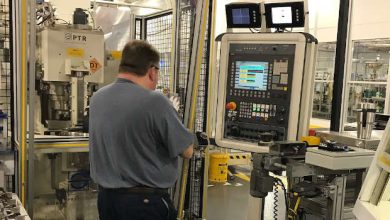How LiDAR Technology Is Revolutionising The Robot Vacuum Industry

The robot vacuum industry has gone through a revolution of sorts. You can look back 15 years ago, compare it to today, and see the difference. Gone are the days of clunky, long, and thick vacuum cleaners that required regular manpower and maintenance, were loud at times, and whose bags had to be squeezed multiple times before being emptied. The robotic vacuum industry is growing rapidly and becoming increasingly complex as innovations emerge. One technology that changes everything is LiDAR (Light Detection and Ranging). This blog post will examine how LiDAR technology is revolutionizing the robot vacuum industry.
What Is LiDAR Technology?
LiDAR, short form for Light Detection And Ranging, is usually a remote sensing technology that uses laser light to measure distances. It is based on measuring the time it takes for a light pulse to travel from the emitter to the target and back to the sensor. The two most common technologies are active and passive. Active LiDAR emits a light pulse and measures the reflection, while passive LiDAR measures the reflection of natural environmental light.
LiDAR is used in so many industries, including automotive, civil engineering, aerial mapping and surveying, 3D modeling and construction, and military and homeland security applications. In particular, its application in autonomous vehicles has been growing rapidly over recent years due to its ability to scan surroundings accurately in real-time without any interference from weather conditions or other external factors.
The Birth of LiDAR Technology
LiDAR technology was first developed in the 1960s by Hughes Aircraft Company, shortly after the invention of the laser.
In the 1960s, NASA used LiDAR to map the moon’s surface, and it was then used in underwater applications for oceanographic research and surveying forests, fields, and swamps.
The technology then moved into other industries, such as engineering, construction, agriculture, and mining. However, it wasn’t until the early 2000s that LiDAR technology became popular with autonomous vehicles (AVs) and robotics.
How Is LiDAR Technology Being Used in Robot Vacuums?
This technology uses laser pulses instead of ultrasound, allowing it to accurately pinpoint its position than any other method. The LiDAR sensors on top of a robot vacuum use this data to map out its environment. The LiDAR sensors then send this information back to the robot vacuum via Bluetooth or Wi-Fi in real time to adjust its movements accordingly, enabling it to find optimal cleaning routes while avoiding obstacles.
How Is LiDAR Technology Making Robot Vacuums Better Than Ever?
Robots are no longer a futuristic fantasy. Robot vacuums are real and are here to stay. LiDAR technology has made robot vacuums smarter than ever; here is how LiDAR achieves this:
- LiDAR technology helps with the navigation of the robot vacuum by mapping out your home before starting a cleaning cycle. For example, your robot vacuum Australia can plan its route around your furniture, such as chairs and tables, without bumping into them or getting stuck under them. This allows it to avoid bumping into walls and furniture and clean more efficiently than conventional cleaning methods in Australia.
- The mapping also helps if you have areas with no pre-existing maps available online, such as houses built before 2010 or apartments where everything is laid out differently from other buildings nearby.
- LiDAR technology helps robot vacuums see through walls and furniture. This means it can detect areas where there may be clutter or waste that previous vacuum cleaner models have missed.
- The LiDAR technology is making the modern robot vacuum cleaner intelligent and efficient in operation to cover large areas. Its sensors also help it know where to clean and detect when it’s about to hit something.
- LiDAR also gives robot vacuums more awareness of their surroundings, which leads to safer operation. For example, if there’s a person in front of it, the vacuum will stop immediately instead of running into them. This prevents injuries and property damage when someone gets caught in a moving cleaning device.
The Future of LiDAR Technology
LiDAR technology in the robot vacuum industry is looking brighter since it is now being used for many different purposes other than robot vacuums, including:
Self-driving cars: The same technology of LiDAR used in robot vacuums is being used to scan the area around Self-driving vehicles as they move around.
Military weapons systems: The military uses LiDAR technology to help improve their targeting systems and make them more accurate than ever before – this means fewer accidents and less collateral damage when firing off weapons at enemy forces during combat situations/wars.
Conclusion
LiDAR technology has been quietly revolutionizing the world around us. No matter what you think, it’s hard to deny LiDAR technology’s benefits to the robot vacuum industry. In our own homes, LiDAR technology is helping make robot vacuum Australia cleaners a reality. From being able to identify obstacles and read room layouts to mapping out new territory, LiDAR has become an essential part of modern robotics.





Thanks for sharing. I read many of your blog posts, cool, your blog is very good. https://www.binance.info/en/join?ref=53551167